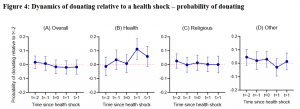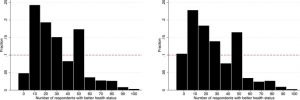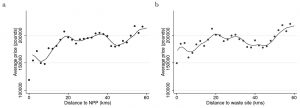
15 June 2022 – Vicky Jackson
We were delighted to host the Bristol Education Markets Workshop at Clifton Hill House on 6 and 7 June under the CEPS Education research programme. One of the organisers – Hans Sievertsen – explains why CEPS works on what we call ‘education markets’ –
“We often think of markets as a place where we buy and sell things for money. But in some markets, money is not directly involved, and allocations are instead based on a set of rules. One example is allocation to schools. Often, parents provide a list of desired schools for their children and a centralised system then allocates children based on some pre-defined criteria, such as distance to the school or prior attainment. In some countries, such as France and Italy, teachers are allocated to schools in the same way. There are many details in the design of these systems that affect who ends up going to which school, and since we know that the school we attend and the teachers we have are important for how well we do later in life, it is of great policy importance to get the design of these systems right.”
The workshop examined policies using market mechanisms in education, including design and implementation and their impact on school and university allocation in different countries. Sessions covered policy design and school choice in practice, and research on allocation mechanisms, how schools prioritise among students and implications for lower-income households and across genders.
In the first session on School Choice in Practice, Mille Bjørk from the Danish Ministry of Children and Education outlined the new Danish model for allocating high-school students to schools. The priorities for the new system are 1) to counteract ethnic and socio-economic segregation across schools, particularly in urban areas where the population distribution is more polarised, and 2) maintaining a sustainable number of students in rural schools. Emily Hunt from the Education Policy Institute presented a personal account of the experience of navigating the complexities of the English school allocation process during a pandemic. Reconciling her own experience as a parent with the evidence on school choice, she found the current school choice system favours more affluent families who are better able to navigate the system, potentially working against the government’s aim to ‘support the most disadvantaged’ and ‘level-up education standards’.
In the second session on Design, Éva Holb (Institute of Economics, KRTK, Hungary) explored the centralised secondary school admission system in Hungary, outlining its (relatively complex) design and the implications for student choice and outcomes. Aytek Erdil from the University of Cambridge spoke on widening access and managing recruitment in university admissions. He outlined a model, developed with Battal Doğan (Bristol) for a centralised system which could be implemented after school-leaving qualifications are known.

The final session on day one focussed on Income. Andreas Bjerre-Nielsen from the University of Copenhagen investigated why students submitted preferences for educational programs that differed from what they actually wanted to study. Using Danish admissions to higher education he examined how non-truthful reporting is linked to misguided beliefs about admission chances and to students’ backgrounds. Jose Montalban (SOFI at Stockholm University) examined the impact of low-income household priority policies on school choice and on student outcomes, asking whether these policies are effective in practice at improving outcomes for students from disadvantaged backgrounds. His paper used school choice in Madrid as a case study and tested the effect of income-based priority points on parental school choice, parental application behaviours and academic and non-academic student outcomes.
The second day began with papers centered on Priorities. Peter Biro of the Institute of Economics, KRTK Hungary, discussed school choice with and without priorities. He looked at two case studies using non-standard school choice mechanisms. The first was Estonian kindergarten allocation where a ‘deferred acceptance’ mechanism is in use with different priorities and the second, school choice in Sweden where priorities are not used and instead a new concept of ‘constrained welfare-maximising assignment’ is employed. Julien Grenet (Paris School of Economics) looked at the effects of affirmative action on targeted and non-targeted students through a study of Paris high schools following a policy change in admission rules that gave low-income students priority over other district students.
In a session on Gender, Caterina Calsamiglia (ICREA at the Institute of Political Economy and Governance) undertook a comprehensive evaluation of a policy change in Spain in 2010 which increased the weight of standardised exam results for university admissions from 40% to 60% and its implications for the gender gap. Soledad Giardili from the University of Edinburgh presented her paper “Single-Sex Primary Schools and Student Achievement: Evidence from Admission Lotteries” asking whether single-sex schools provided the benefits they are assumed to deliver, such as improving academic achievement and achieving gender equality. Soledad used the setting primary school allocation in Malta to explore this question, finding a positive effect on academic and non-academic factors for boys and girls.
The workshop concluded with a session on Choice and Access. Damon Clark from UC Irvine asked how parents choose schools. He collected new survey data from parents as they choose schools, focussing on the impact of parents’ beliefs about their own child and about the wider local population on their choices. Lykke S. Christensen’s (University of Copenhagen) paper “Playing the system: Address Manipulation and Access to Education” studies address moves of students in Denmark, where proximity to a school is key in the allocation of places. Lykke and colleagues identified a 100% increase in the number of address changes around high school choice deadlines. She considered the implications for access to education, finding the increase in address changes is driven by high socio-economic status applicants to the 15% most popular schools. Low socio-economic status students lose out as a result in terms of contact with higher achieving peers. These results have implications for modelling school choice mechanisms and policy effectiveness.
The last presentation from Ellen Greaves (University of Bristol) asked how schools shape neighbourhoods. That is – how do schools’ admissions priorities affect households’ residential moves and how does this vary across different types of households? To examine these questions, she compared household location choices in local authority areas with a geographical admission priority against those with a non-geographic priority system, i.e. grammar school systems which concentrate on academic achievement.
We had fantastic research presented at the workshop and the opportunity to discuss in person following two years of virtual events was hugely beneficial. Mille Bjørk from the Danish Ministry of Children and Education said of the event:
“I really enjoyed the workshop. In the ministry we always aim to consider the research evidence when designing new policies. Interacting with the researchers at this workshop was really valuable, and I’ve built connections that will be helpful in the future.“
Thank you to all our presenters and attendees for making the event so productive and enjoyable. If you would like to learn more about the event, please see the programme.














